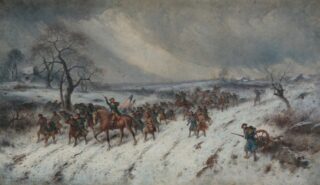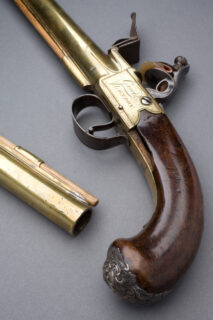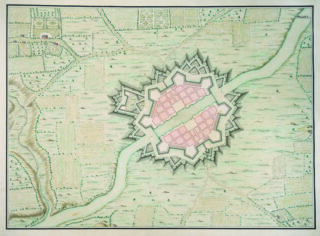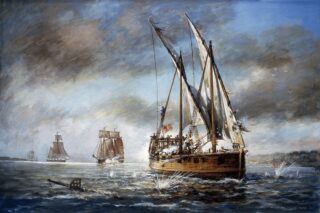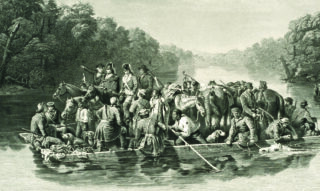Supporting scholarship and promoting popular understanding of the American Revolution is central to the work of the American Revolution Institute. The Institute welcomes distinguished scholars and authors to share their insights and discuss their latest research with the public at Anderson House through lectures, author's talks and panel discussions. The Institute also hosts a variety of other historical programs throughout the year, including our Lunch Bite object talks, battlefield tours, special Anderson House tour programs and other events. Many of the events we offer are free.

July 2022
Author’s Talk – Feeding Washington’s Army: Surviving the Valley Forge Winter of 1778
In this new history of the Continental Army’s Grand Forage of 1778, award-winning military historian Ricardo A. Herrera uncovers what daily life was like for soldiers during the darkest and coldest days of the American Revolution: the Valley Forge winter. There the army launched its largest and riskiest operation—not a bloody battle against British forces but a campaign to feed itself and prevent starvation or dispersal during the long encampment. Herrera brings to light the army’s Herculean efforts to feed…
Find out more »Lunch Bite – Nathanael Greene’s pistols
Join Historical Programs Manager Andrew Outten for a presentation on a pair of holster pistols that was owned by Gen. Nathanael Greene and given to his aide-de-camp, Nathaniel Pendleton, who served under Greene during the Southern Campaign of the Revolutionary War. The brass box-lock pistols were made about 1782 by William Grice and Charles Freeth of Birmingham, England, and feature the initials “NG” engraved on the silver escutcheons. This Lunch Bite will focus on the history of the pistols along…
Find out more »Lecture – The Art and Science of Siege Warfare in the American Revolution
Fortification and siege doctrine were a critical component of any eighteenth-century military. Following a discussion of artillery in the Revolutionary War and a unique American-manufactured six-pounder owned by the Society of the Cincinnati of the State of South Carolina, Glenn F. Williams of the U.S. Army Center of Military History explores the intricacies and technical expertise required to carry out an effective and successful siege in the Revolutionary War. The discussion will center on eighteenth-century field fortification design and construction…
Find out more »Lecture – The Artifacts of Arnold’s Bay: Following the Diaspora of Material Culture Over Time
During the last engagement in the 1776 northern campaign season, Gen. Benedict Arnold burned the remaining vessels of his American fleet in Lake Champlain to prevent capture by the British. In 2020, the National Park Service American Battlefield Protection Program funded an archeological survey project of this area, now classified as a Revolutionary War battlefield known as Arnold’s Bay. Historical archaeologists Cherilyn Gilligan and Christopher Sabick of the Lake Champlain Maritime Museum discuss their work on this recent archaeological study…
Find out more »August 2022
Lecture – “A Kind of Partisan War”: An Archaeological Perspective on Francis Marion
When Nathanael Greene was appointed commander of the southern Continental forces in the fall of 1780, he wrote to George Washington that he would be forced to fight “a kind of partisan war,” until he could raise an army large enough to contend with the British. Greene’s strategy was to check the main British army while partisan militia leaders like Thomas Sumter, Francis Marion and Andrew Pickens harassed the British supply lines. Marion was the most famous and successful of…
Find out more »